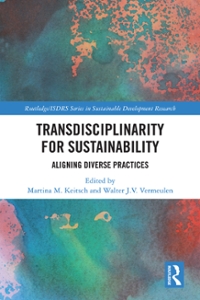Question
SEXUAL HARASSMENT Sexual harassment is a type of discrimination that includes three types of harassing behavior: (1) gender harassment (verbal and nonverbal behaviors that convey
SEXUAL HARASSMENT
Sexual harassment is a type of discrimination that includes three types of harassing behavior: (1) gender harassment (verbal and nonverbal behaviors that convey hostility, objectification, exclusion, or second-class status toward members of one gender); (2) unwanted sexual attention (unwelcome verbal or physical sexual advances, which can include assault); and (3) sexual coercion (when favorable professional or educational treatment is conditioned on sexual activity). The differences between forms of harassment are critical, especially since many individuals are unaware that gender harassment is a type of sexual harassment. While anybody may become a victim of sexual assault, some groups are statistically more likely to be targeted.
1. Women
Sexual violence disproportionately affects women and girls. Sexual harassment, unwelcome sexual contact, and rape are all examples of this.
2. Students at college
Sexual harassment does not always occur in the workplace. It is also possible for a professor or someone else with authority over students to misuse that authority and engage in sexual harassment. Because many students are living on their own for the first time, they may be unaware of the options available to them for seeking justice after sexual harassment at the hands of a professor or mentor. However, after an incidence of sexual assault, every student has the right to seek justice, and such occurrences may be reported to the school's HR department, campus police, or other law enforcement, depending on the circumstances.
3. Members of the LGBTQ+ community
When compared to their straight and cisgender counterparts, members of the LGBTQ+ community are more likely to face sexual harassment. The Human Rights Campaign (HRC) has documented the rates of sexual assault experienced by LGBTQ+ people:
An intimate partner has committed sexual violence or stalking against 44% of homosexual women and 61% of bisexual women. The same thing has happened to 35% of heterosexual women. Bisexual women have been raped at a rate of 46 percent, whereas heterosexual women have been raped at a rate of 17 percent (Worke et al 2021). Transgender individuals are particularly vulnerable to sexual assault in the LGBTQ+ community. At some point in their life, 47 percent of transgender individuals report being sexually assaulted. Being an LGBTQ+ person of race increases one's risk of sexual assault. Transgender Native Americans, for example, have been sexually assaulted at a rate of 65 percent. According to the Human Rights Campaign, individuals of the LGBTQ+ community are also less likely to seek help or alert law enforcement after experiencing sexual assault, fearing prejudice from police, hospitals, or rape crisis centers.
4. Women of color
Women of color are more likely than white women to be victims of sexual violence. As previously stated, black women are three times as likely than white women to face workplace sexual harassment. Meanwhile, RAINN reports that Native Americans are twice as likely as other races to be sexually assaulted (Bissell et al 2021). This phenomena may potentially have a racial component. According to a Pacific Standard Magazine research, aggressors who conduct sexual deviance are increasingly targeting women of color owing to mistaken ideas of authority, or because they believe they would be less likely to disclose their wrongdoing. An attacker, for example, may target an illegal immigrant, believing that he or she would be too frightened of deportation to report the assault. It is important to remember that everyone has the right to be protected from those who would exploit their authority for sexual favors.
5. Male sexual assault
Although men are subjected to sexual harassment at a far lower rate than women, sexual violence against men is nevertheless a serious issue. Sexual violence against males is often completely disregarded, and male victims of sexual assault are discouraged from disclosing what has occurred to them for fear of being labeled as unmasculine (Worke et al 2021). Instead of condemning males who have been sexually abused, RAINN advises carefully listening to male victims' stories, showing your concern and compassion for them, and validating their experiences.
Q1) FROM THE POST ABOVE raise criticisms or present a novel way of justifying the position cited in the original post.
Step by Step Solution
There are 3 Steps involved in it
Step: 1

Get Instant Access to Expert-Tailored Solutions
See step-by-step solutions with expert insights and AI powered tools for academic success
Step: 2

Step: 3

Ace Your Homework with AI
Get the answers you need in no time with our AI-driven, step-by-step assistance
Get Started


